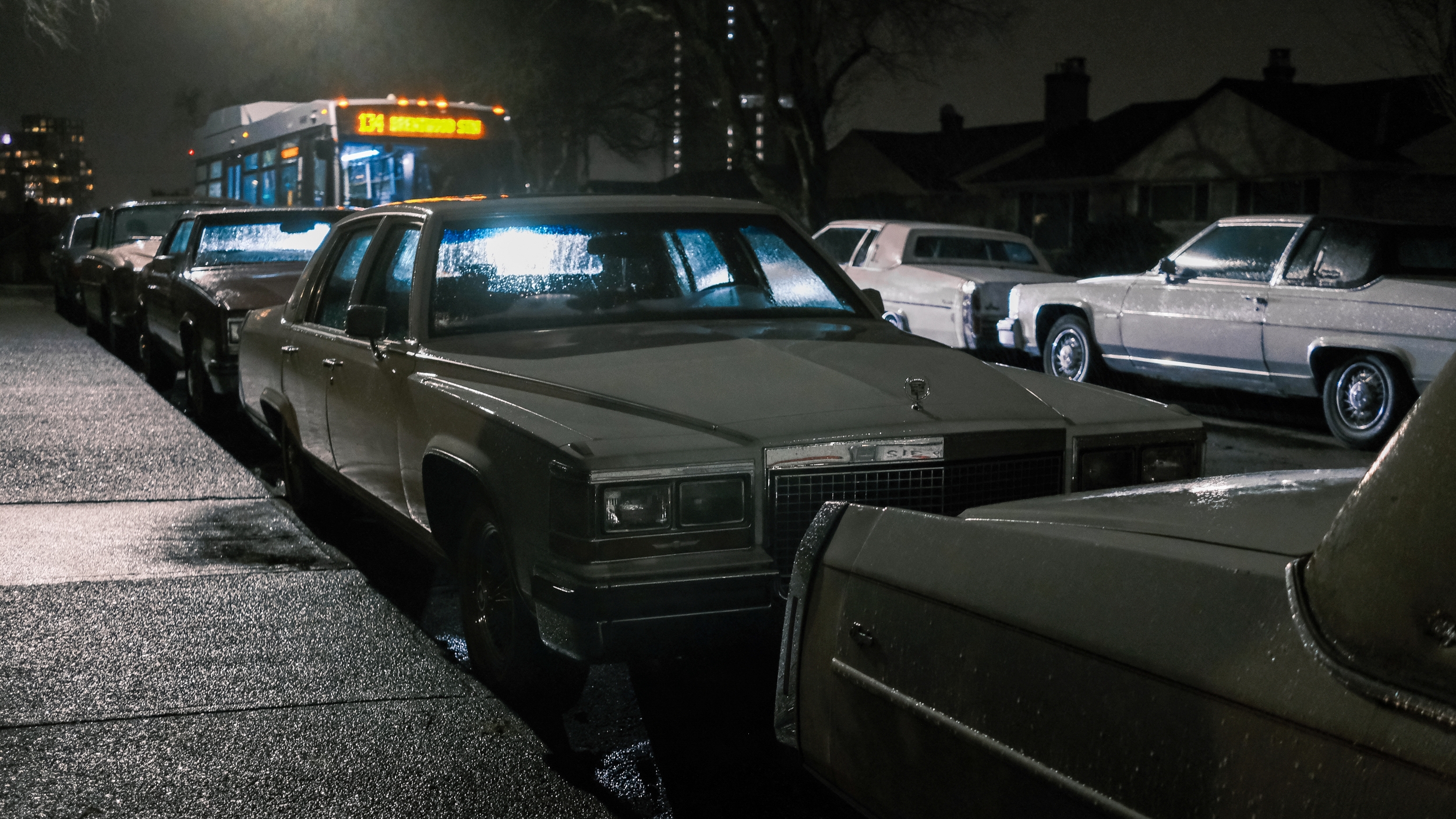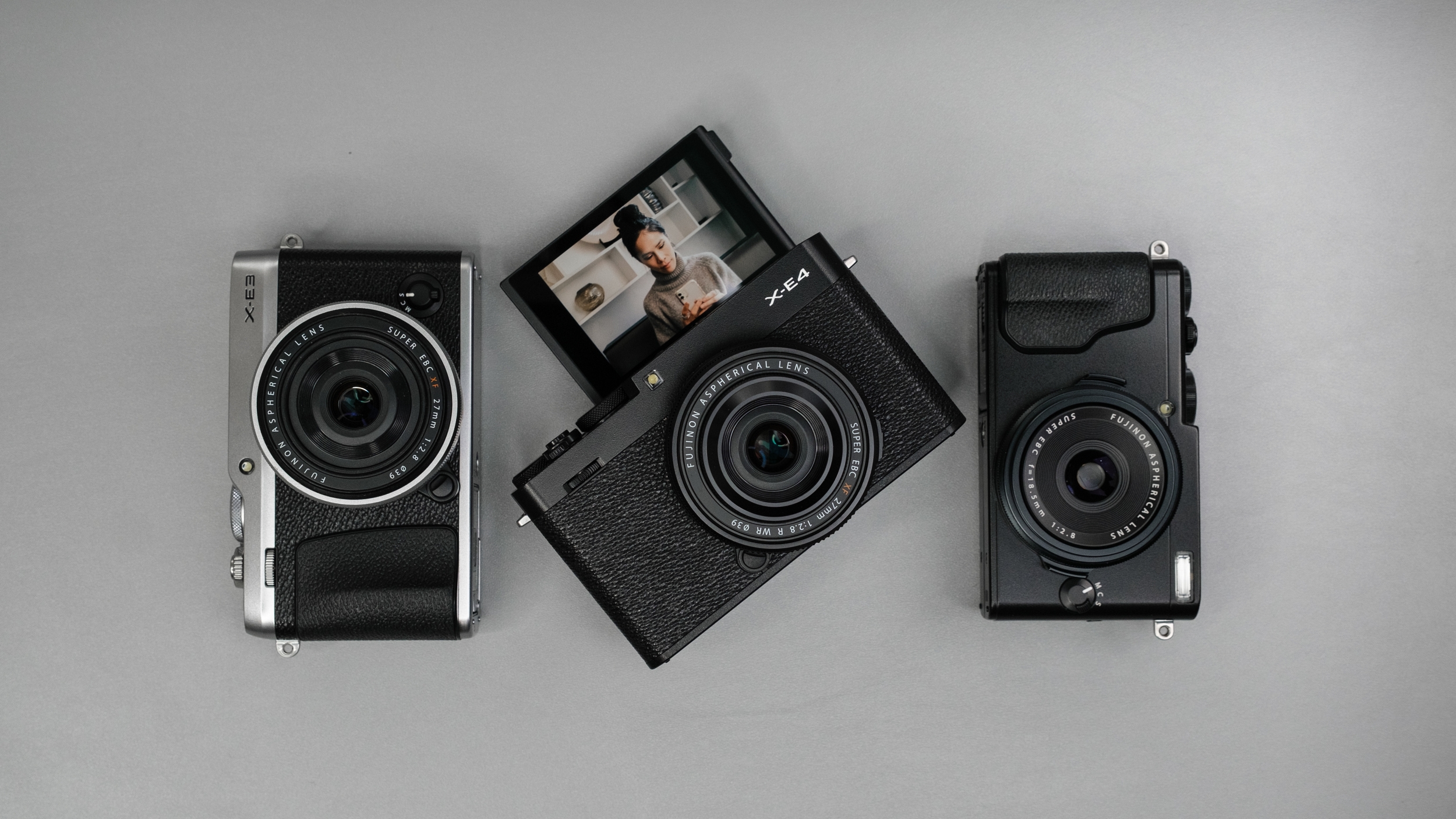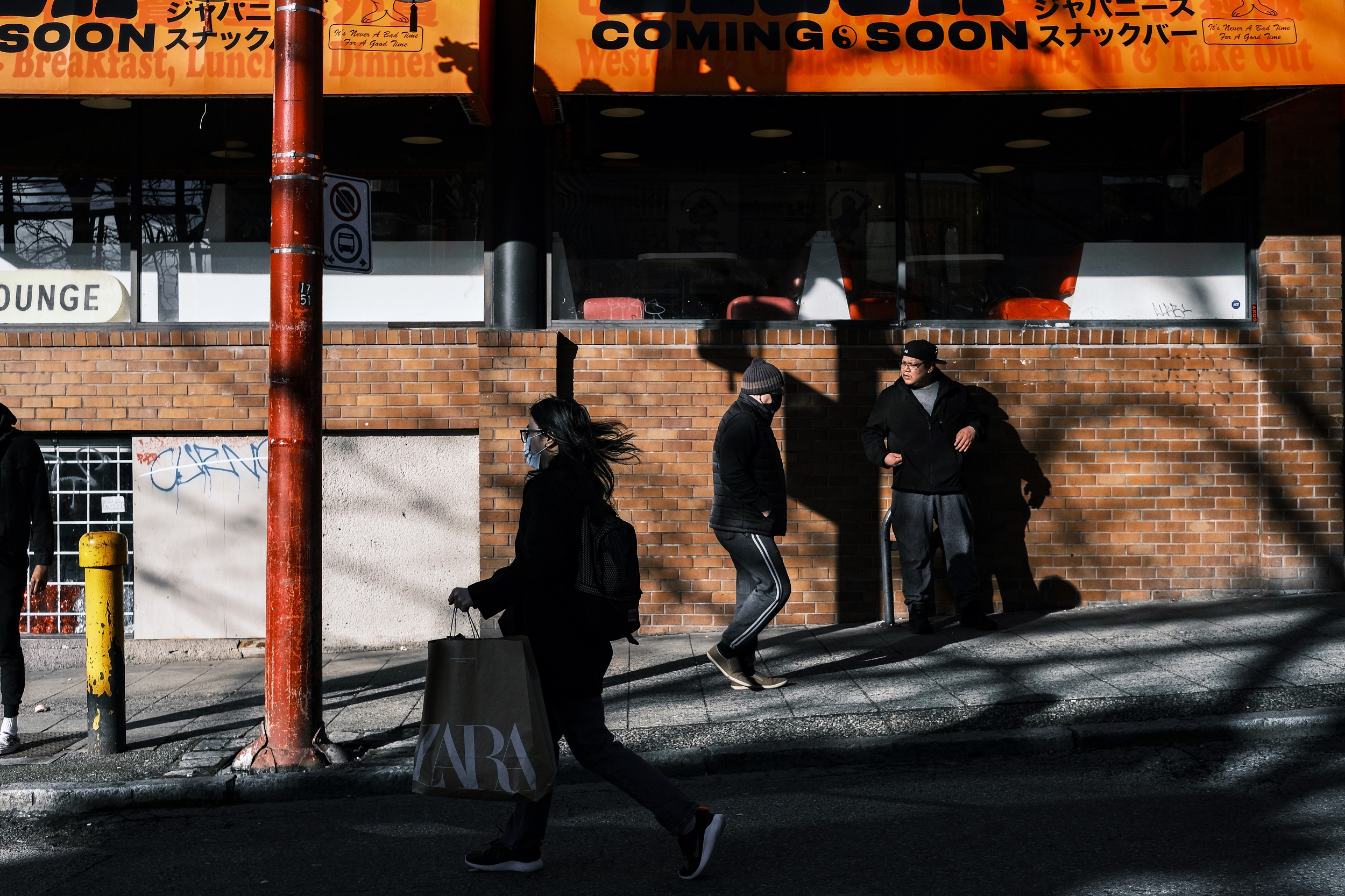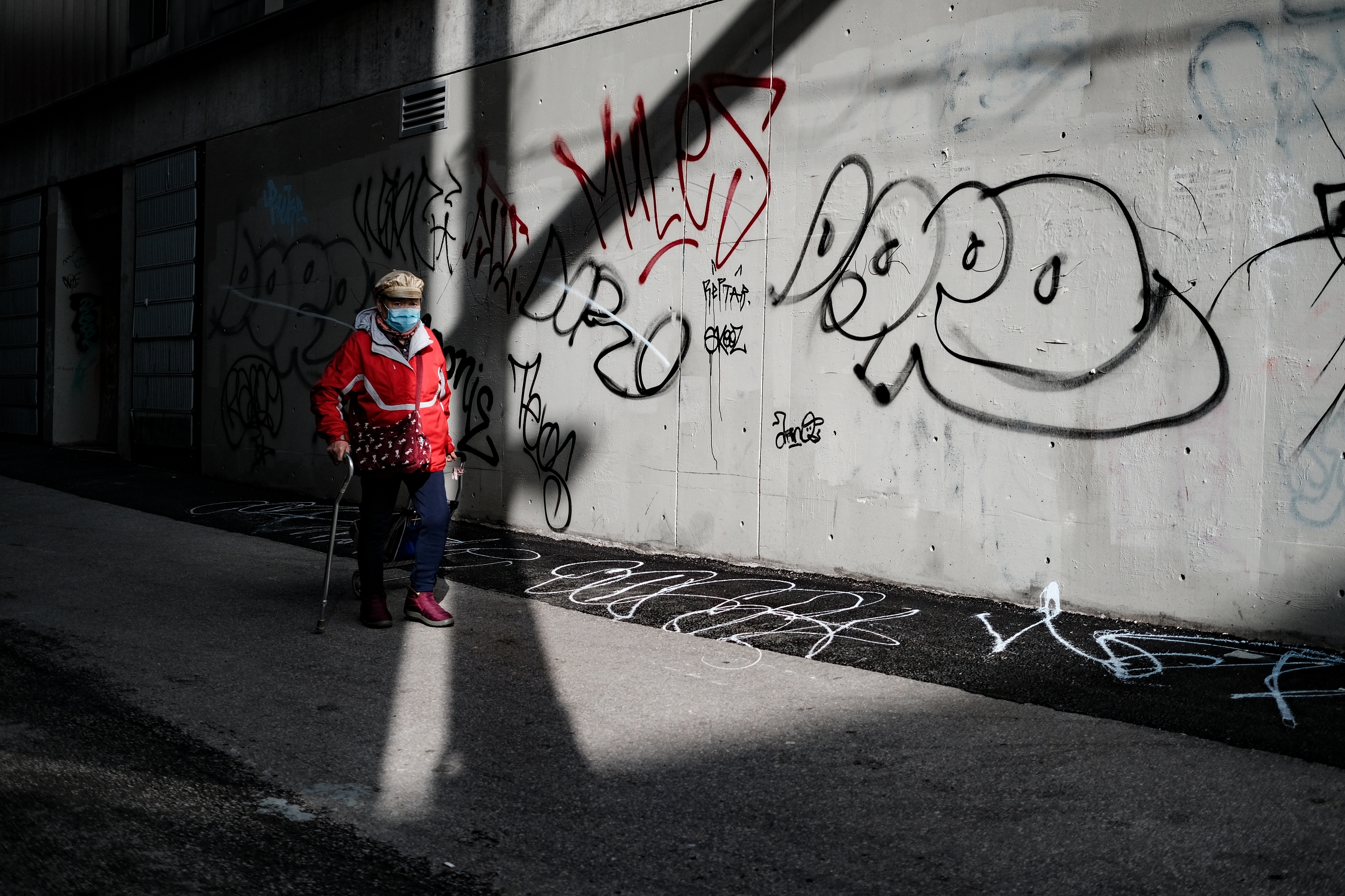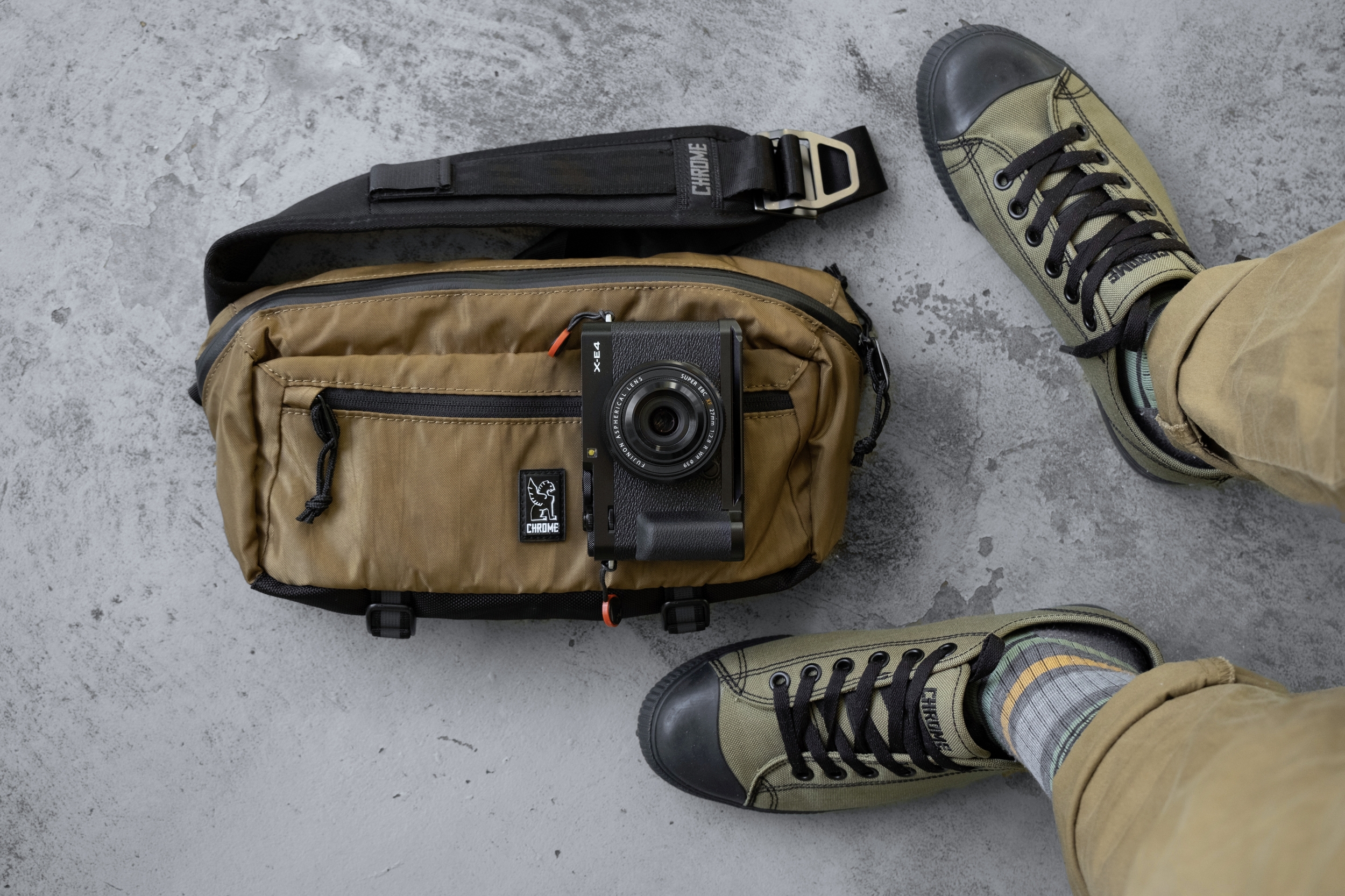I enjoy having a camera with me at all times. It gives me a sense of security, knowing I won’t miss that perfect shot. Some days I don’t mind carrying a larger camera, especially if my goal is to take pictures. Other times, I want something compact and discrete, typically on my days off when I’m with my wife. Within the current Fujifilm line-up, the X100V is the most powerful and feature-rich compact camera. I can take it with me anywhere and not feel like it’s a burden around my neck or inside a small sling bag. Fujifilm understands many photographers want a competent yet compact camera for everyday carry and decided to showcase the X-E4 and XF27mm f/2.8 R WR as the alternative to the X100V. These are two very different types of cameras, even though superficially they may look similar. However, both are ‘pretty’ cameras that are easy to carry around. I’ve temporarily switched out the X100V for the X-E4 + XF27mmm f/2.8 R WR. Let me share with you my thoughts thus far.

X-E4 + XF27mm f/2.8 R WR. 1/1000th sec f/8 @ ISO 400. Cropped to 21:9 cinematic aspect ratio (6239 x 2674px)
Overall I really enjoyed the X-E4 and XF27mm f/2.8 R WR as my everyday carry camera. Yes, it’s compact and light. Even with the thumb rest and hand grip attached, this kit easily fits inside a large coat pocket or into a small sling bag. When I walk into a situation where I know cameras aren’t welcome, the X-E4 and XF27mm can quickly disappear, no problem. When I need it again, it can just as quickly reappear and I’m ready to shoot again. I found when I was walking alone and taking photographs, I didn’t bother with a neck strap. The hand grip gave me enough stability to hold it, much like the X-S10 and X-H1. Because the EVF eyecup is so small, I did have to rely heavily on the LCD if I was wearing glasses and the sun was out. However, if I was wearing contact lenses or if it was darker outside, the EVF was fine. Since the articulating screen has so many useful positions, it’s easy to use the LCD more often, compared to the fixed LCD on the previous X-E3. Shooting up high, down low, or discretely was super easy with the X-E4.
The XF27mm f/2.8 R WR is optically the same as the previous version. Even the focusing mechanism is the same, so it still chatters when trying to achieve focus. Optically it behaves much like the XF23mm f/2 R WR. Up close and wide open, the lens is a bit soft, especially along the edges. If you’re trying to do a waist-up portrait, the lens is fine. Trying to photograph a watch or anything up close, you have to stop down. From a medium distance, the lens is great. Stop it down to f/5.6 and this lens sharpens up nicely. Because the new X-E4 doesn’t have a rear dial, having the aperture ring is a must on this lens. Turning the ring to the left until it stops, I know I’m at f/2.8. Turn it all the way to the right and the aperture clicks into Auto mode. This is intuitive.
The new XF27mm is a no-nonsense lens with very few tricks up its sleeve. it’s light, it’s compact, and that’s it. Its greatest superpower is the unusual field-of-view at 41mm equivalent in full-frame. If you find that you’re always cropping into your images from your XF23mm lens, or that you’re always backing up with the XF35mm lens, you will probably love the XF27mm focal length. One of my favourite lenses on my Leica M system is the Minolta M-Rokkor 40mm f/2 lens, and on my manual SLRs, it’s the Minolta 45mm f/2 MD lens. I like this focal length for street photography in conjunction with my 28mm lenses.
Unfortunately, the XF18mm and XF27mm are optically not as good as Fujifilm’s other lenses, such as the XF23mm f/2 and XF35mm f/2. The new XF27mm is an improvement by adding the aperture dial and WR (weather-resistant), but I would like to see a Fujicron version of this lens. XF27mm f/2.0 R WR with an improved optical design and a silent and quick stepping motor for autofocus. For that extra stop of brightness, I think many of us would put up with a slightly bigger and heavier lens. For my compact primes, f/2.0 is the sweet spot for size, weight, and performance.
I’ve attached some images captured with the XF27mm f/2.8 versus the XF35mm f/2.0. When I use the XF27mm indoors in a low light situation, I had to bump it up to ISO 1600, and I was still getting 1/30th of a second. That’s about the limit of where I could hand-hold a sharp image, as well as making sure my subject wasn’t moving too quickly. Only 1/5 of my images were sharp, while the rest were blurry from motion blur or my unsteady hands. When I switched the XF27mm out for the XF35mm f/2 R WR, I was getting 1/70 sec and 90% of my images were sharp. That’s how much of a difference 1 stop makes when in low-light situations.
However when outdoors, the X-E4 and XF27mm worked great once I set up the camera the way I like to shoot. Because the X-E4 has the latest sensor, processor, and firmware from Fujifilm, I knew I could take the same quality images as my X-Pro3, X-T4, and X100V. Due to the lack of customizable buttons and dials, I did have to make some compromises in comparison to my setup on the X100V or X-Pro3. Since there’s no Focus Select dial or View Mode button on the X-E4, I initially moved these features to the swipe functions on the LCD screen. However, after use, it wasn’t very practical. I was constantly triggering these features by accident, as I also use the screen for touch focus or focus point selection.
I eventually gave up and moved the Focus Select feature to the Q Menu, but this was not possible for the View Mode select since this wasn’t an optional feature in the Q Menu. Because of this, I had to leave the View Mode in the regular menu, which is a pain to access. Hopefully, Fujifilm can add View Mode as an option in the Q Menu in the future. Continuing on, I set the top Fn button for White Balance, the AEL/AFL button for Film Simulation (previously a swipe function but again, not practical for me), and the front dial push-in function to toggle between Shutter Speed and ISO. I typically shoot in Aperture Priority Mode and use the rear Exposure Comp dial to adjust the exposure. Again, having the aperture ring on the XF27mm was a must-have feature for my style of shooting.
In conclusion, the X-E4 + XF27mm f/2.8 R WR is a competent everyday carry camera. I enjoyed using it on my days off, as well as my main street photography camera. Shooting outside in daylight, I had no problem with the f/2.8 lens. I enjoy the 41mm equivalent field-of-view, although I do wish it was one-stop brighter and had improved autofocus. At $400 it’s not an expensive lens, but when you buy it as a kit with the X-E4 at $1049, you basically get the lens for only $200. The X-E4 is a very compact body, but I enjoyed it better with the thumb grip and hand grip, especially when shooting without a strap. Because of Fujifilm’s minimalist theme with the new X-E4, many useful dials and buttons were removed, assuming those who want those features will just add them to the Q Menu or swipe Fn feature on the LCD. I don’t find swipe Fn very useful and the Q Menu adds an extra unnecessary button press, slowing down my shooting process.
Ultimately, if I had to choose between the X-E4 + XF27mm f/2.8 R WR versus the X100V for street photography and everyday carry, I would pick the X100V. Having a razor-sharp 23mm leaf-shutter lens with an extra stop of brightness, built-in ND filter, more customizable dials and buttons, a built-in flash, and the hybrid rangefinder viewfinder is worth the $350 price difference. However, the X-E4 is a great compact interchangeable lens camera body. Having a flip-up articulating screen is unique to the X-E4, and you can always add lenses with OIS to get stabilization, not possible on the X100V. If you really need an everyday carry compact camera but need it to be an ILC (Interchangeable Lens Camera), the X-E4 is the best that Fujifilm currently has to offer. For more of my thoughts on the X-E4, check out my previous article. Thanks for reading and happy shooting!!







